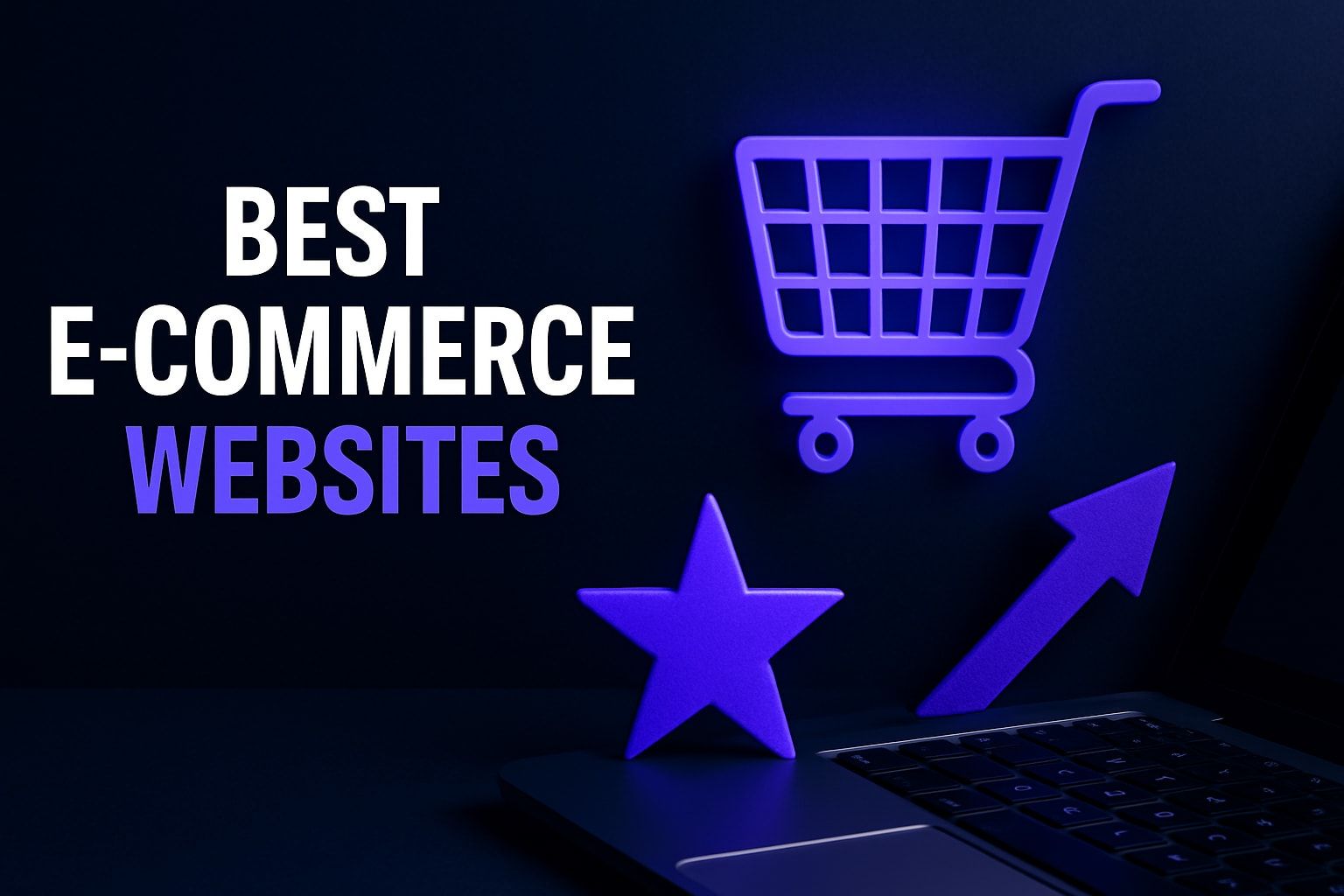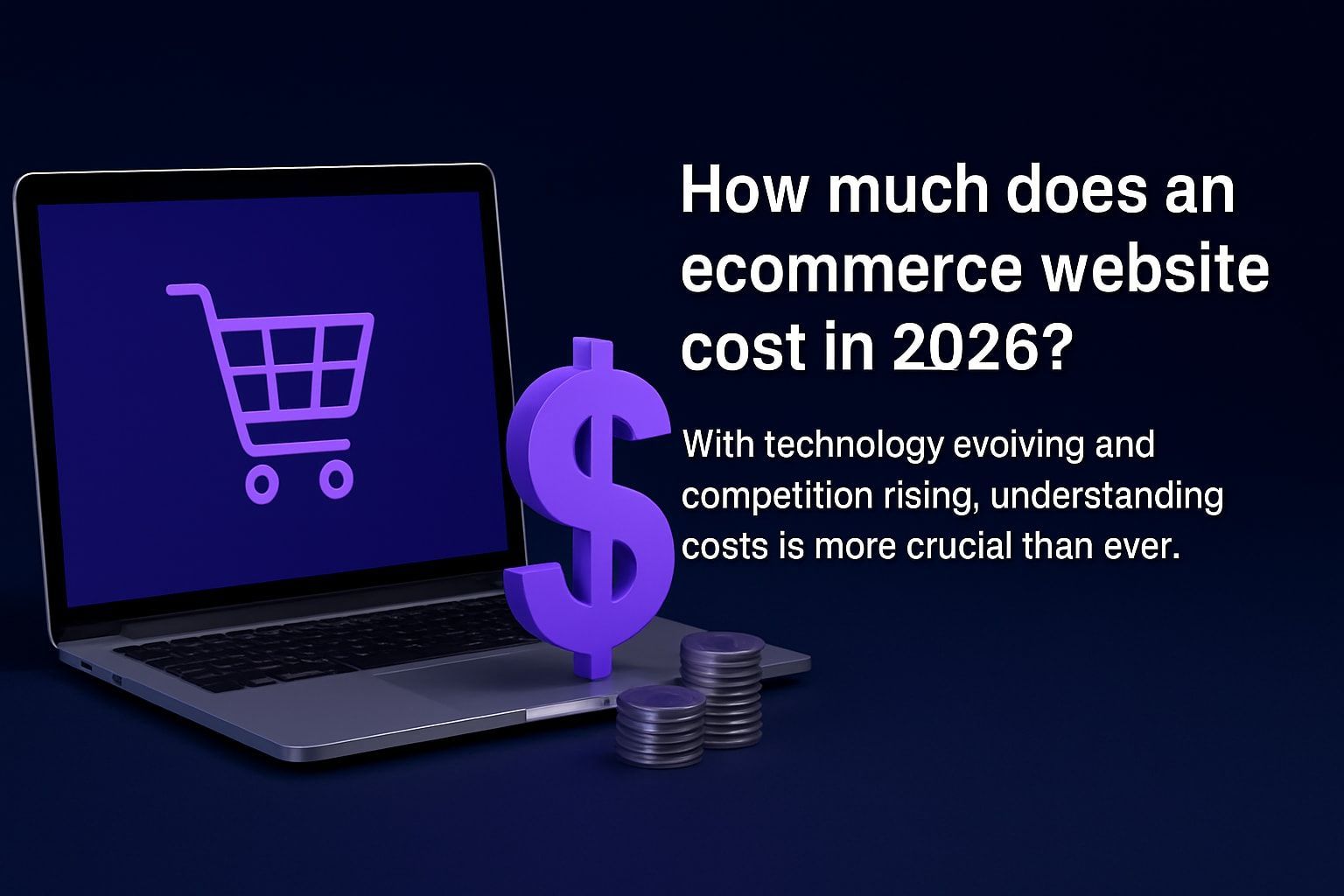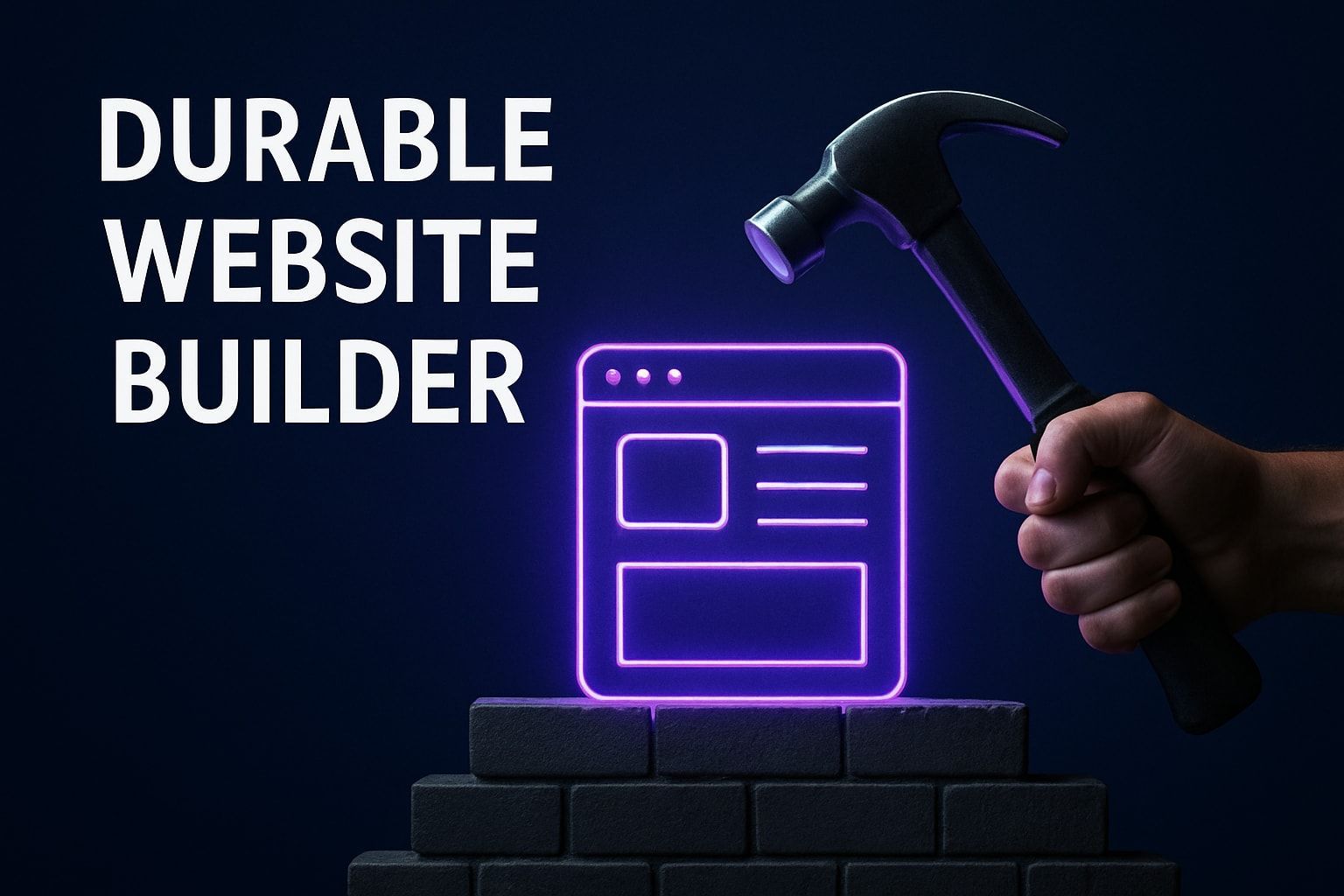Builder Page Guide: How to Create Stunning Pages in 2025
Imagine launching a visually stunning website in minutes using a builder page—no coding or tech skills required. In 2025, the right design can set you apart as digital competition intensifies. Modern builder page tools now let anyone create professional, responsive, and SEO-friendly sites with ease.
This guide reveals the essential strategies, top tools, and step-by-step methods to build pages that captivate and convert. Ready to future-proof your online success? Let’s dive into the world of builder page solutions for 2025.
The Evolution of Builder Pages: What’s New in 2025
The builder page landscape has changed dramatically in just a few years. In 2025, creating a professional, high-impact website is no longer reserved for coding experts or designers. Anyone can now use a builder page platform to launch visually compelling, fully optimized sites with ease.
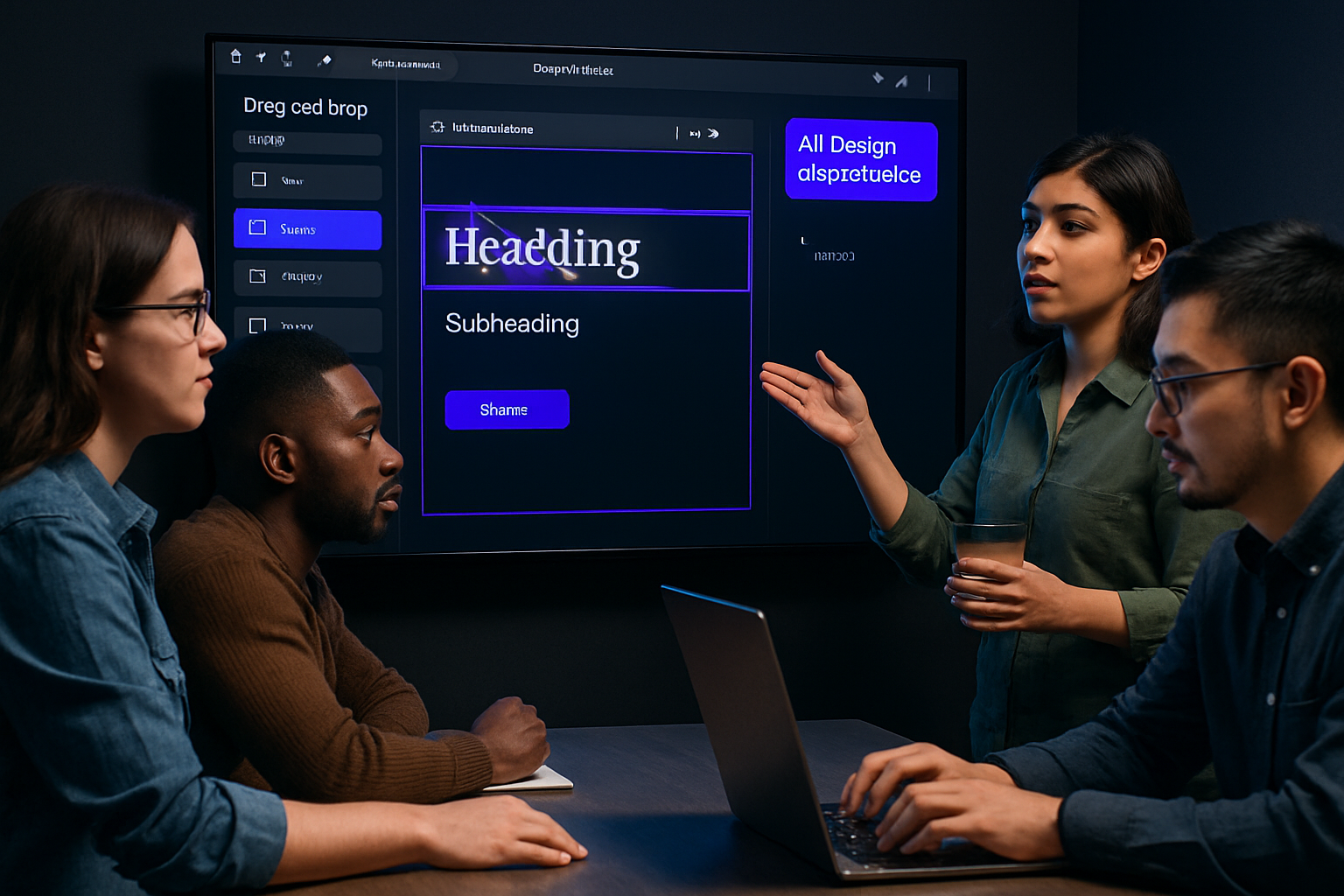
Drag-and-Drop Design and Visual Editing Take Center Stage
Just a few years ago, builder page tools were simple editors with limited features. Today, over 80% of small and midsize businesses rely on visual, drag-and-drop interfaces (WPBeaverBuilder data). These platforms let you arrange elements with a click, instantly seeing your changes. This leap in usability means anyone can design a builder page that looks polished and professional—no code required.
Modern builder page platforms come loaded with prebuilt blocks, responsive grids, and dynamic widgets. This speeds up development and empowers users to experiment creatively without fear of breaking the site.
AI-Driven Design, Mobile-First, and Accessibility by Default
One of the most exciting changes in builder page technology is the integration of AI-driven design assistants. These smart tools analyze your content, suggest layouts, recommend color palettes, and even generate headlines. Platforms like Beaver Builder and BigCommerce Page Builder now include features like the AI-powered design assistant to help users optimize every aspect of their builder page.
Mobile-first design is now standard—every builder page automatically adapts to any device, ensuring seamless user experiences. Accessibility is also no longer an afterthought. Builder page platforms now help users meet WCAG and ADA standards, making sure everyone can navigate and interact with your site.
Performance, Collaboration, and Cloud-Based Editing
Performance is a major focus for every builder page in 2025. Built-in SEO tools, Core Web Vitals optimization, and lightning-fast hosting are baked into most platforms. This means your builder page ranks higher and loads quicker, right out of the box.
Collaboration has also taken a leap forward. Teams and agencies can now edit the same builder page in real time, leave comments, and manage permissions—all from the cloud. This streamlines workflows and shortens project timelines dramatically.
2019 vs. 2025: Builder Page Platform Comparison
| Feature | 2019 Builder Page | 2025 Builder Page |
|---|---|---|
| Drag-and-drop design | Basic | Advanced, intuitive |
| AI design assistants | Rare | Standard |
| Mobile responsiveness | Optional | Default |
| Accessibility tools | Limited | Built-in, automated |
| Real-time collaboration | Minimal | Robust, cloud-based |
| SEO/performance optimization | Manual | Automated |
Democratizing Web Design for Everyone
The evolution of the builder page has democratized web design. No longer do you need years of experience or a big budget. With modern builder page tools, you can launch faster, convert more visitors, and stay ahead of the competition—all while focusing on what matters most: your message and your audience.
Choosing the Right Builder Page Platform for Your Needs
Selecting the right builder page platform in 2025 can feel overwhelming, but with the right approach, you’ll find a solution that fits your unique needs. Whether you’re launching a business website, eCommerce storefront, or personal portfolio, understanding your requirements and the latest features is crucial for success.
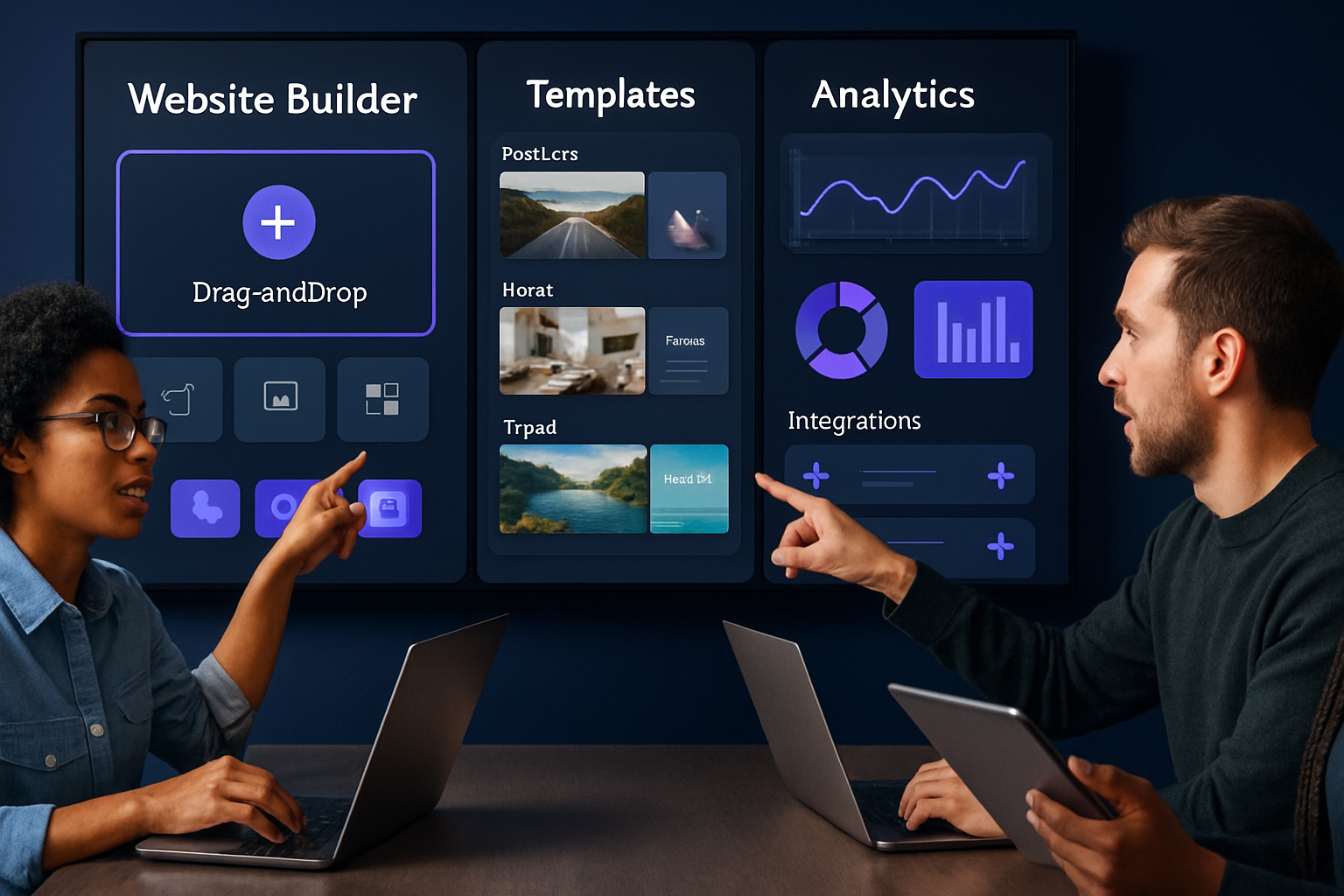
Understanding Your Project Requirements
Before you dive into any builder page platform, clarify your website’s primary objective. Are you building a business site, launching an eCommerce shop, showcasing a creative portfolio, or setting up a blog or landing page? Your goals will guide your platform choice.
Next, assess your team’s size and technical expertise. If you’re a solo freelancer, simplicity and ease of use might top your list. For agencies or larger teams, look for collaborative features and workflow management.
Scalability is another vital factor. Will your builder page platform grow with you as your business expands? Review integration needs for eCommerce, CRM, analytics, or marketing tools.
Budget also plays a big role. Compare free versus premium features and watch for hidden costs. For example, a freelancer may prioritize affordability, while an agency might focus on robust integrations.
By mapping out these essentials, you set the stage for a builder page experience that aligns with your objectives and resources.
Key Features to Look For in 2025
Modern builder page platforms offer a wealth of features. Start with a drag-and-drop interface and real-time visual editing—these make design accessible for everyone, regardless of tech skill.
AI-powered design and content generation tools are now mainstream, providing layout suggestions and even automated copy. Extensive template libraries tailored to industries save time and ensure a professional look. For inspiration, check out this website template library to see the variety available.
Built-in SEO tools, performance boosters, and mobile optimization are must-haves. Integration with third-party apps—like payment gateways, analytics, and marketing tools—streamlines your workflow.
Security and support shouldn’t be overlooked. Look for 99.9% uptime, SSL certificates, and responsive support channels. According to recent surveys, 70% of users cite template quality and ease of use as their top builder page priorities.
Checklist for 2025:
- Drag-and-drop design
- AI-powered features
- Industry-specific templates
- SEO and mobile optimization
- App integrations
- Security and support
Choosing a builder page platform with these features ensures you’re ready for anything the digital world throws your way.
Leading Platforms Comparison
With so many options, comparing builder page platforms side by side can help you make an informed decision. Here’s a quick look at leading platforms:
| Platform | Unique Strengths | Best For |
|---|---|---|
| Beaver Builder | Unlimited sites, flexible modules | Agencies, freelancers |
| BigCommerce | Advanced eCommerce integrations | Online stores, SMBs |
| Elementor | Deep customization, vast add-ons | Designers, marketers |
| Wix | AI-powered setup, user-friendly | Beginners, small businesses |
| Squarespace | Elegant templates, all-in-one hosting | Creatives, portfolios |
For example, a business might start with a single landing page using Beaver Builder, then scale up to a full eCommerce site with BigCommerce as needs evolve. Matching your builder page platform to your growth plans ensures you’re always a step ahead.
Step-by-Step Guide: Creating Stunning Pages with a Builder in 2025
Ready to create a stunning builder page in 2025? Follow this step-by-step guide to transform your ideas into high-converting, responsive web pages—no coding required. Whether you’re a business owner, marketer, or creative, these steps will help you leverage the full potential of modern builder page platforms.

Step 1: Planning Your Page Structure and Content
Every successful builder page starts with a clear plan. Define the objective of your page: Are you aiming to generate leads, sell products, or showcase your portfolio? Knowing your target audience helps you tailor content and design choices to their needs.
Next, map out the user journey. Identify key conversion points, such as signup forms or purchase buttons, and ensure they’re easy to find. Sketch a wireframe or use your builder page’s planning tools to outline sections—hero area, features, testimonials, and CTAs.
Gather all necessary content before you dive into design. This includes high-quality images, persuasive copy, product details, and customer testimonials. Organizing assets upfront speeds up the builder page process and ensures consistency.
For example, when planning a high-converting eCommerce homepage, outline the sections: hero banner with featured products, product grid, value propositions, social proof, and a prominent call to action. This approach makes your builder page more user-centric and conversion-focused.
- Define your core goal and audience
- Map the customer journey and conversion points
- Outline sections using wireframes or builder tools
- Collect all content assets in advance
A well-structured plan lays the foundation for a builder page that truly delivers results.
Step 2: Selecting and Customizing Templates
Modern builder page platforms offer expansive template libraries tailored to various industries and purposes. Begin by browsing templates that fit your project’s goals. Preview their layouts on desktop and mobile to ensure responsiveness.
Evaluate each template for accessibility—check color contrast, font size, and navigation ease. Once you’ve chosen a starting point, customize the template to align with your brand. Adjust color schemes, swap fonts, and update imagery to match your visual identity.
Many builder page tools let you save your customized templates for future use, streamlining your workflow across different campaigns or pages. For a SaaS landing page, you might select a clean, modern template and tweak it with your brand’s palette and value statements.
- Preview templates by industry or use case
- Check responsiveness and accessibility
- Personalize layout, colors, fonts, and images
- Save custom templates for future builder page projects
Thoughtful template selection and customization ensure that your builder page stands out and feels authentically yours.
Step 3: Drag-and-Drop Design and Real-Time Editing
The real magic of a builder page happens in the drag-and-drop editor. Add, remove, or rearrange elements—such as rows, columns, and widgets—with simple gestures. Instantly preview changes to see your page take shape in real time.
Leverage AI-powered design assistants for layout suggestions and quick design fixes. These features help maintain balance and visual appeal, even if you’re not a design expert. Stay creative, but remember to prioritize usability and clarity.
For example, building a product features section is as easy as dragging in icon blocks, text, and images, then reordering them to highlight your best offerings. This flexibility is why so many users prefer a builder page for rapid prototyping and iteration.
- Drag, drop, and rearrange content blocks
- Use visual editing for instant feedback
- Tap into AI design suggestions for polish
- Balance creativity with user-friendly layouts
A streamlined drag-and-drop experience makes every builder page project feel approachable and efficient.
Step 4: Enhancing Functionality with Widgets, Apps, and Integrations
A builder page isn’t just about looks—it’s about performance and interactivity. Expand your page’s capabilities by adding widgets like contact forms, live chat, or social media feeds. These features boost engagement and capture valuable leads.
For eCommerce projects, integrate product grids, checkout modules, and review sections directly into your builder page. Connect analytics, CRM, and marketing automation tools to track performance and nurture visitors.
Most builder page platforms support both built-in and third-party add-ons, letting you tailor functionality to your needs. For instance, integrating a newsletter signup form alongside a live chat widget can significantly increase user interaction and conversions.
- Add interactive widgets and apps
- Integrate eCommerce features and product displays
- Connect analytics and marketing tools
- Enhance with third-party add-ons for advanced needs
With the right integrations, your builder page becomes a dynamic hub for your business goals.
Step 5: Optimizing for SEO, Performance, and Mobile
A high-impact builder page must be discoverable, fast, and accessible on any device. Use your platform’s built-in SEO tools to add meta tags, alt text, and schema markup. These features help search engines rank your builder page higher.
Test and optimize your page speed to meet Core Web Vitals standards. Preview and tweak your design for flawless mobile responsiveness. Accessibility checks—like verifying color contrast and keyboard navigation—ensure everyone can use your builder page.
Many platforms now offer dedicated dashboards for performance and SEO. For detailed strategies, explore resources on built-in SEO optimization that can help your builder page achieve top search results and user satisfaction.
- Use SEO tools for metadata and schema
- Optimize speed for better user experience
- Ensure mobile responsiveness across devices
- Run accessibility checks for inclusivity
With these steps, your builder page will be ready to attract, engage, and convert visitors in 2025.
Design Best Practices for High-Impact Builder Pages
Building a high-impact builder page in 2025 means thinking beyond just looks. Design must serve both user experience and business goals. Modern builder page tools empower anyone to create visually stunning, intuitive websites that convert visitors into customers.
Let's break down the essential design best practices that can turn your builder page from average to unforgettable.
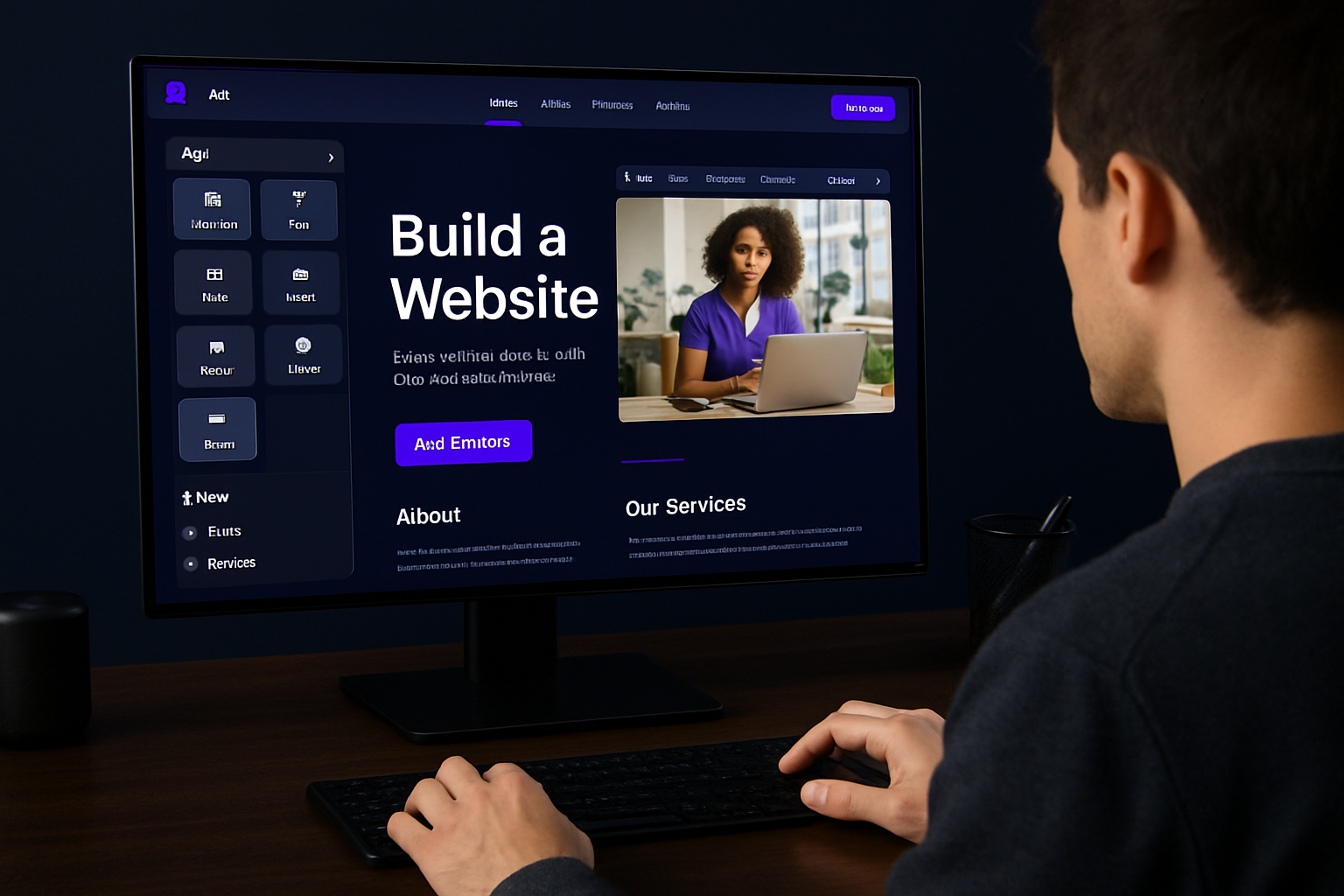
Visual Hierarchy and User Experience
A successful builder page starts with a clear visual hierarchy. Use distinct headings, subheadings, and calls to action (CTAs) to guide users. Well-defined sections help users scan and absorb information quickly.
Whitespace is your friend. It gives breathing room between elements, making your builder page feel open and easy to read. When spacing is consistent, users won't feel overwhelmed.
Navigation should be intuitive. Group related content together, and keep menus accessible. Using contrasting button colors for CTAs draws attention where it matters most.
Accessibility isn't optional in 2025. Builder page platforms make it easier to comply with standards like WCAG and the European Accessibility Act and Business Websites. This means considering keyboard navigation, proper heading structure, and alt text for images.
Example Table: Cluttered vs. Well-Structured Page
| Element | Cluttered Page | Well-Structured Page |
|---|---|---|
| Headings | Inconsistent | Clear, logical hierarchy |
| Whitespace | Minimal | Generous, balanced |
| Navigation | Hidden links | Obvious, easy to follow |
| CTAs | Buried | Prominent, eye-catching |
By prioritizing these aspects, your builder page will deliver a smooth, engaging experience for every visitor.
Branding, Colors, and Typography
Your builder page should instantly reflect your brand. Start with a color palette that matches your logo and evokes the right emotions. For example, blue tones build trust, while orange encourages action.
Choose web-safe, legible fonts. Stick to two or three typefaces to keep the builder page consistent and professional. Size headings larger than body text for easy scanning.
Color psychology matters. Use accent colors for CTAs and highlights. Make sure there’s enough contrast between text and background for readability and accessibility.
Maintain consistency in button styles, iconography, and font choices across every builder page. This helps visitors recognize your brand and navigate with confidence.
Example:
- A fintech builder page uses deep blues and clean sans-serif fonts to convey security.
- An eco-friendly eCommerce builder page might use green accents and rounded fonts to appear approachable.
Leverage your builder page platform's template customization to save brand settings, so every new page starts on-brand.
Imagery, Video, and Interactive Elements
High-quality visuals are a must for any modern builder page. Use crisp, relevant images that support your content and brand. Avoid generic stock photos when possible.
Video hero banners can grab attention and explain your value proposition in seconds. Just be sure to compress videos so your builder page loads quickly on all devices.
Add interactive elements like sliders, hover effects, and subtle animations to boost engagement. Don't overdo it—a few well-placed effects make your builder page feel dynamic without slowing it down.
Example: A SaaS builder page with a video demo in the hero section can see conversion rates climb, as visitors understand the product faster.
Conversion Optimization Strategies
To get results from your builder page, optimize for conversions at every step. Place CTAs above the fold and at natural stopping points. Make buttons big, bold, and easy to tap on mobile.
Run A/B tests on headlines, button text, and form layouts. Small tweaks can have a big impact on your builder page performance.
Social proof builds trust. Add testimonials, reviews, and trust badges near your CTAs. These reassure visitors and nudge them toward action.
Example: Moving a newsletter signup form to the top of a builder page can boost signups by double digits.
By following these best practices, every builder page you launch will look stunning, feel intuitive, and drive real business results.
Advanced Tools, Integrations, and Customization
The builder page landscape in 2025 offers a toolkit that’s more powerful and flexible than ever. Whether you’re scaling a business, collaborating with a team, or optimizing for conversions, today’s platforms let you extend your builder page far beyond basic layouts and templates.
Extending Builder Functionality with Add-Ons
Builder page platforms in 2025 are all about extensibility. You can supercharge your site with a growing ecosystem of widgets, modules, and plugins. Add-ons range from booking systems and popups to dynamic content blocks and custom code snippets.
For eCommerce, many builder page solutions now offer seamless integrations with top platforms. For example, integrating WooCommerce within Beaver Builder lets you manage product displays, reviews, and checkout flows directly from your builder page. If you’re looking for a robust solution, check out eCommerce builder solutions for insights on integrating advanced shopping features.
- Add booking calendars, popups, and testimonials via modules
- Use custom code blocks for unique functionality
- Enable product grids, reviews, and checkout with eCommerce plugins
With these tools, your builder page can evolve alongside your business needs.
Real-Time Collaboration and Workflow Management
Modern builder page platforms empower teams to work together seamlessly. Real-time collaboration tools let multiple users edit pages at once, assign permissions, and control who can publish changes. Version control means you can roll back to previous versions if needed, reducing the risk of errors.
Cloud-based editing and sharing are now standard, making it easy for agencies and remote teams to co-design from anywhere. For example, a digital agency can create, review, and finalize a client’s builder page without ever leaving the platform.
- Multi-user access with granular permissions
- Instant updates and feedback loops
- Secure sharing of drafts and published pages
These features ensure your builder page workflow is smooth, efficient, and ready for scale.
Data-Driven Design and Analytics
A successful builder page isn’t just about looks—it’s about performance. Integrating analytics tools like Google Analytics or Hotjar is now a breeze, providing heatmaps, user journeys, and conversion tracking directly within your dashboard.
Builder page platforms now offer built-in analytics panels, so you can monitor key stats without leaving the editor. This empowers you to make data-driven decisions, iterating on layouts and content to boost engagement and conversions.
- Connect analytics and heatmaps in a few clicks
- Track user behavior and optimize conversion funnels
- Use dashboard insights to refine your builder page over time
By embracing analytics, you turn your builder page into a living, evolving asset.
AI and Automation in Builder Platforms
Artificial intelligence is taking the builder page experience to the next level. AI-powered tools suggest layouts, generate content, and automatically optimize images and accessibility settings. This not only speeds up your workflow but also ensures best practices are followed.
According to AI in Web Design Industry Statistics, AI adoption in builder page platforms is driving efficiency and creativity. For example, you can use AI to generate product descriptions, recommend color palettes, or flag accessibility issues instantly.
- Automated content and layout suggestions
- Smart optimization for speed and accessibility
- AI-driven insights for ongoing improvements
With these advances, your builder page is always ahead of the curve.
Future-Proofing Your Builder Pages: Trends and Tips for 2025 and Beyond
Staying ahead of the curve is essential for anyone relying on a builder page to drive results. As web technology evolves, future-proofing ensures your online presence remains effective, secure, and relevant in the years to come.
The rise of AI, AR/VR, and voice search is transforming what a builder page can achieve. Platforms now offer AI-driven design, content generation, and layout suggestions, making it easier than ever to create engaging experiences. For a deep dive into the latest innovations, check out the Best AI Website Builders in 2025 to see how leading platforms are harnessing emerging technology.
SEO and accessibility standards are always evolving. Modern builder page platforms now include built-in tools for schema markup, Core Web Vitals monitoring, and automatic accessibility checks. This helps you stay compliant with WCAG and ADA guidelines, ensuring your site reaches more people and performs well in search rankings.
Scalability is another critical factor. Your builder page should seamlessly grow with your business, supporting dynamic content, robust CMS integration, and flexible layouts. This future-proofs your website as your needs, audience, and offerings expand.
Staying current with design trends is also crucial. Features like micro-interactions, dark mode, and minimalist layouts are now standard for a competitive builder page. These elements not only enhance visual appeal but also improve user experience and engagement.
Security and privacy requirements continue to tighten. Look for builder page platforms that prioritize SSL encryption, GDPR compliance, and regular security updates. Protecting user data builds trust and keeps your site in good standing with both users and search engines.
Regularly updating and testing your builder page for speed, compatibility, and performance is key to long-term success. As Google’s algorithm changes, use your platform’s built-in analytics and optimization tools to adapt quickly and maintain high rankings.
In summary, a future-ready builder page leverages new tech, follows evolving standards, and adapts to trends. By making smart choices today, you ensure your site remains effective, secure, and ready for whatever the digital world brings next.
Now that you’ve seen how easy it is to create stunning, high-converting pages with the latest builder platforms—and how AI and smart design tools can save you hours—it’s your turn to put these strategies into action. Imagine launching your website, portfolio, or online store in just a few clicks, all without worrying about code or technical hurdles. With Avantiy’s intuitive drag-and-drop editor, customizable templates, and built-in SEO features, you’ll have everything you need to build a site that stands out in 2025. Ready to see what you can create?
Start Building Your Website Today
Start building your new website today
No credit of debit card required start building today

